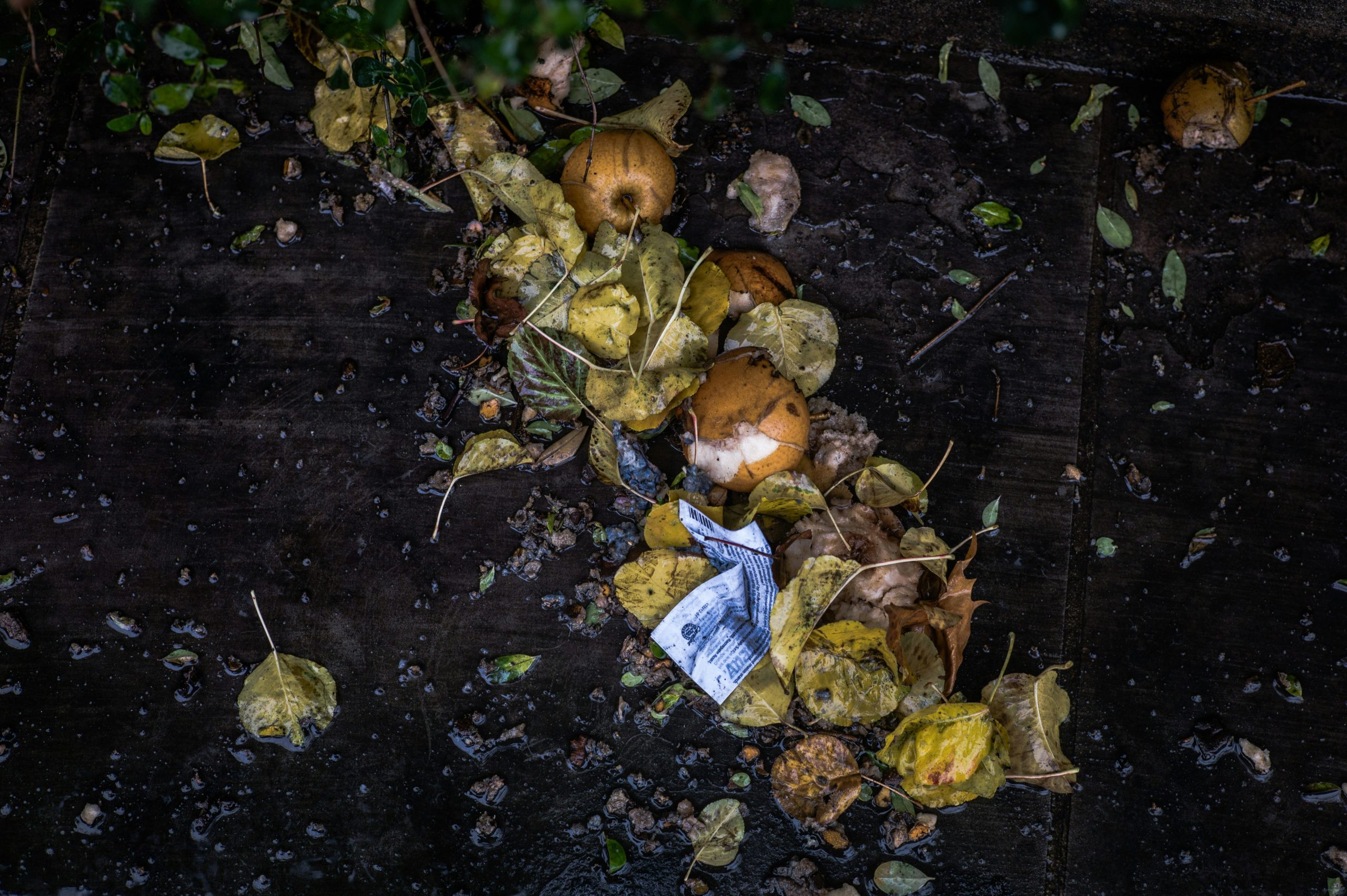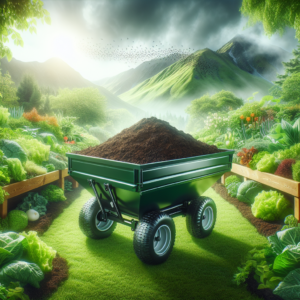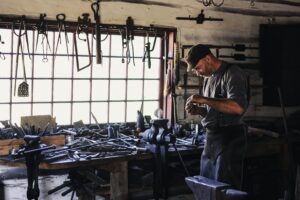In our journey to create rich, nourishing compost for our gardens, keeping pests at bay can sometimes feel like a formidable challenge. But don’t worry, we’ve got you covered! In “How Do I Keep Pests Out Of My Compost?”, we’ll explore practical and effective strategies to deter unwanted critters from invading our compost. We’ll share tips on maintaining the right balance of green and brown materials, ensuring proper aeration, and using natural deterrents to keep our compost pile healthy and pest-free. Together, we’ll turn our composting efforts into a rewarding and hassle-free experience. How do we keep pests out of our compost? It’s a common question we gardeners often ponder as we strive for that perfect, nutrient-rich compost for our gardens. While composting is an excellent method to recycle organic waste and create nourishment for our plants, it does sometimes attract unwanted visitors like rodents, insects, and other pests. But don’t worry; there are effective strategies we can employ to keep pests at bay and ensure our compost remains healthy and thriving.
How Do I Keep Pests Out Of My Compost?
Understanding Why Pests Are Attracted to Compost
What Attracts Pests?
Let’s begin by understanding what attracts pests to our compost piles. Pests, like any other creatures, are drawn to food and shelter. Our compost piles offer both in abundance.
- Food Sources: Fruit scraps, vegetable peels, and other organic materials found in compost are a magnet for pests. These scraps decompose and emit smells that attract creatures from far and wide.
- Shelter: The warmth generated by a compost pile provides an ideal habitat for pests, particularly in colder months. The piles offer not only shelter from the elements but also a place to hide from predators.
By knowing what draws them in, we are better equipped to take preventive measures.
Choosing the Right Composting Method
Types of Composting Methods
Selecting the appropriate composting method can significantly reduce the likelihood of pests infiltrating our compost piles. Here’s a quick breakdown of the common methods:
| Composting Method | Description | Pest Prevention Capability |
|---|---|---|
| Open Pile | Simply a pile of organic matter collected in an open space. | Low |
| Composting Bin | Enclosed structures made of wood, plastic, or metal. | Medium |
| Tumbler | Enclosed, rotating bins that allow for easy turning and aerating. | High |
| Vermicomposting | Composting with worms, often done in specially designed bins. | High |
Best Options for Pest Prevention
For those of us concerned about pests, investing in an enclosed composting system, such as a composting bin or tumbler, is a wise decision. These systems provide barriers that make it more difficult for pests to access the organic material.

Proper Composting Techniques
Balancing Greens and Browns
Maintaining the right balance of green and brown materials is crucial. Greens (like vegetable scraps and grass clippings) are rich in nitrogen, while browns (like dried leaves, paper, and straw) are high in carbon.
| Material Type | Examples | Carbon/Nitrogen Ratio |
|---|---|---|
| Greens | Fruit scraps, vegetable peels, fresh grass clippings | High Nitrogen |
| Browns | Dried leaves, shredded paper, straw | High Carbon |
A mix of about 2 to 3 parts browns to 1 part greens is often recommended. This balance not only aids in decomposition but also helps minimize odors that attract pests.
Regular Turning and Aerating
Turning our compost pile regularly ensures proper aeration, which speeds up the decomposition process and discourages pest habitation. By turning the pile, we also regulate the temperature, making it less inviting for animals seeking warmth.
Moisture Control
Proper moisture levels are vital for effective composting. Our compost should be as damp as a wrung-out sponge. Too much moisture can create an anaerobic environment, leading to odors and pest attraction. Conversely, too little moisture slows down decomposition.
Avoiding Certain Food Scraps
We should avoid adding meat, dairy, oily foods, and cooked food scraps to our compost pile. These items are highly attractive to pests and can lead to unpleasant odors as they break down.
Pest-Specific Strategies
Dealing with Rodents
Rodents such as rats and mice are notorious for finding their way into compost piles. They are particularly drawn to certain types of food scraps.
Prevention Techniques:
- Use Rodent-Proof Containers: Enclosed composters made of durable materials like metal can help keep rodents out.
- Wire Mesh: Place a wire mesh or hardware cloth at the base of the compost pile to prevent burrowing.
- Location: Position the compost pile away from walls and fences which rodents could use to climb into the pile.
Dissuading Insects
Certain insects, like flies and ants, are beneficial to a compost pile as they aid in decomposition, but an overabundance can be problematic.
Prevention Techniques:
- Cover Food Scraps: Always cover fresh kitchen scraps with a layer of browns to deter flies.
- Maintain High Temperatures: Keeping our compost pile hot through regular turning can help manage fly populations.
Deterring Larger Animals
Creatures such as raccoons, opossums, and even bears can be attracted to compost piles if not properly managed.
Prevention Techniques:
- Heavy-Duty Bins: Using heavy-duty, enclosed compost bins can prevent larger animals from accessing the compost.
- Fencing: Installing a fence around the compost area can provide an additional barrier.

Natural Deterrents and Remedies
Plant-Based Deterrents
Certain plants can naturally repel pests. For example, planting mint, lavender, or marigolds around the compost area can deter pests through their strong scents.
Homemade Sprays and Solutions
We can make our own deterrents using ingredients like garlic, hot peppers, and vinegar. These homemade solutions can be sprayed around the compost bin to keep pests at bay.
Monitoring and Maintenance
Regular Inspections
Conducting regular inspections of our compost pile allows us to detect any pest presence early on. Check for signs like burrows, droppings, or an unusual number of insects.
Maintaining the System
Keeping our compost system in top shape by repairing any damage and ensuring lids and barriers are secure goes a long way in preventing pest intrusions.

Being Mindful of Surroundings
Yard Conditions
Neat and tidy yard conditions can also support our compost pest management efforts. Overgrown areas and excessive debris can harbor pests that could be attracted to our compost.
Neighbors’ Compost Systems
If our neighbors are also composting, it’s worth discussing pest prevention strategies with them. Collective efforts can lead to a pest-free community.
The Role of Beneficial Insects and Animals
Encouraging Beneficial Organisms
Not all critters are bad for our compost. Beneficials like earthworms, beetles, and certain fungi play a crucial role in breaking down materials and adding nutrition to our compost.
Companion Planting
We can plant insect-repelling plants around our compost to encourage beneficial insects while keeping harmful ones away. For instance, nasturtiums and sunflowers can attract beneficial predatory insects.
Sharing the Knowledge
Education is a powerful tool in pest prevention. Sharing our knowledge and strategies with friends, family, and community members fosters broader pest management practices.
Hosting Composting Workshops
Hosting or attending local composting workshops can provide practical insights and fosters a community approach to tackling common compost challenges, including pest prevention.
Online Forums and Groups
Joining online forums and groups dedicated to composting can offer us a wealth of information and support from fellow composters.
Conclusion
Keeping pests out of our compost requires a combination of the right methods, proper techniques, and ongoing maintenance. From choosing the appropriate composting system to understanding pest behaviors and implementing preventive measures, we can maintain a healthy, pest-free compost pile. By monitoring and being proactive, we ensure our composting efforts yield rich, nourishing soil for our gardens, free from the nuisance of unwelcome visitors. Happy composting, everyone!



